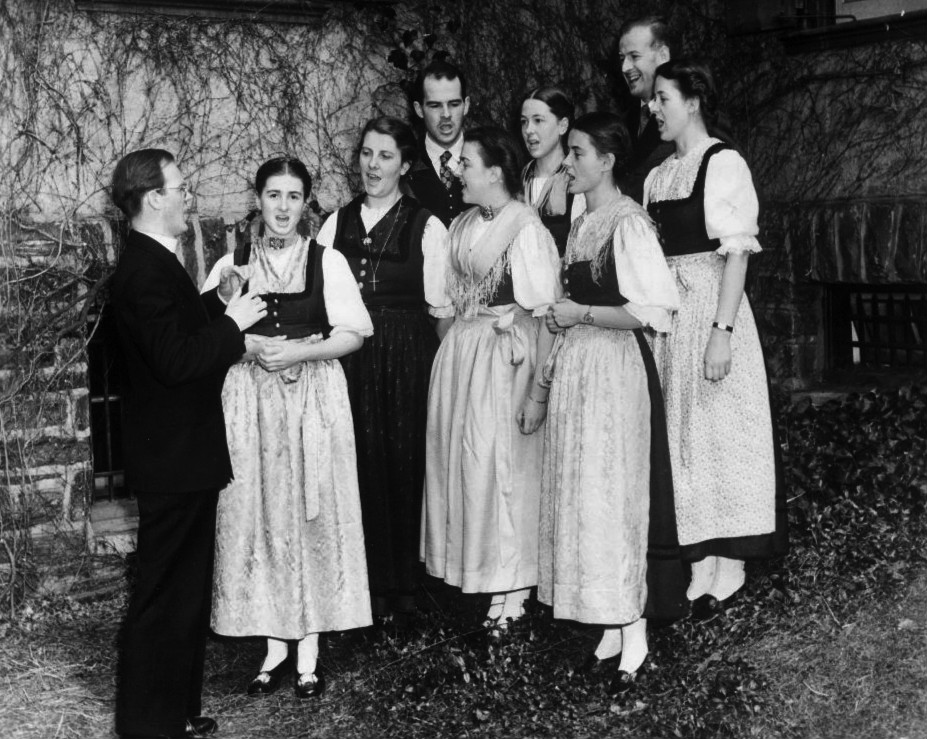The Trapp Family Singers who fled the Nazis performed in Doylestown at the outset of World War II.
A few years ago, I discovered a couple of county connections to the story of the famous Trapp family singers who fled Nazi-occupied Austria for the United States in 1938. One is Aldie, the grand Tudor mansion in Doylestown of sculptor William Mercer, brother of Henry Chapman Mercer who built the borough’s fabulous Fonthill Castle. The Trapp Family singers entertained at Aldie on Dec 22, 1941 – just two weeks after the Japanese attack on Pearl Harbor that thrust the U.S. into mortal combat with Japan, Italy and Nazi Germany in World War II.
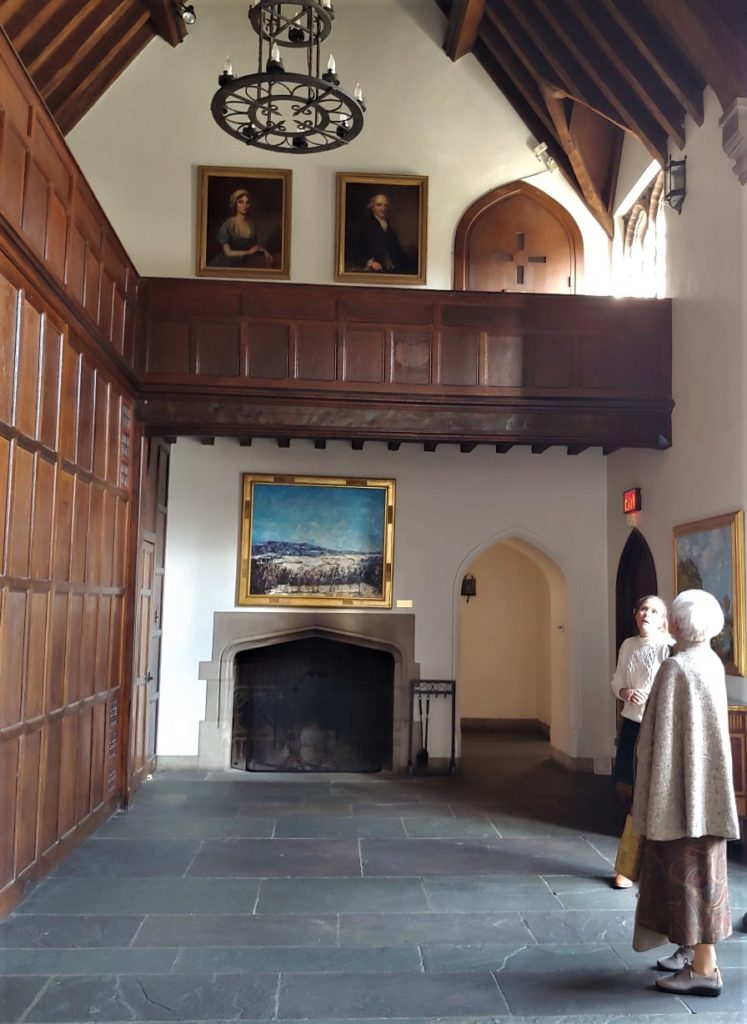
The other Bucks connection is playwright Oscar Hammerstein II. He was living in hilltop Doylestown two miles from Aldie when the Trapps performed. Seventeen years later he wrote the lyrics and playbook for Broadway-bound “The Sound of Music” and movie based on the Trapp family. I’ve long wondered if he got his inspiration at Aldie.
My daughter Genevieve, family friend Wynne Wert and I recently visited to get some answers. The Gatsby-esque mansion is the headquarters of the Heritage Conservancy. Elizabeth Barmach and Alexandra Dashkiwsky of the Conservancy showed us around the home built in 1927. In the Grand Hall where the Trapps performed from a balcony, speculation abounded about a linkage between the Mercer family, Aldie and the Trapps. One version is Hammerstein met the Trapps at Aldie. Another wild hypothesis is William Mercer’s sister Elizabeth who married an Austrian count knew the story and passed it to Hammerstein. No proof has surfaced of either yarn however.
The Trapps were celebrated singers in Austria long before arriving in America. Baron Georg von Trapp, a wealthy Austrian naval commander, was a widower with seven young children in 1926. The Nonnberg Abbey in Sulzburg sent nun-in-training Maria Augusta (think Julie Andrews from the movie) to educate the captain’s children at his magnificent Sulzburg estate. Georg fell in love with Maria, they married and she gave birth to three children, bringing the clan to 10.
Maria, a descendent of Austria’s famed Rainer family singers, molded her brood into a pitch-perfect children’s choir. What followed were concert tours for three years – until the Nazis arrived in 1938.
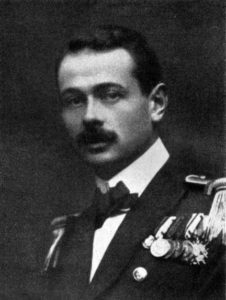
Harsh treatment of Trapp classmates who were Jewish, government advocation of abortion and Georg’s induction into the German navy convinced the family to emigrate to the U.S. where they toured as the Trapp Family Choir. A New York Times review of Dec. 10, 1938, glowed, “There was something unusually lovable and appealing about the modest, serious singers of this little family aggregation . . . .the handsome Mme. von Trapp in simple black, and the youthful sisters garbed in black and white Austrian folk costumes enlivened with red ribbons. It was only natural to expect work of exceeding refinement from them, and one was not disappointed.”
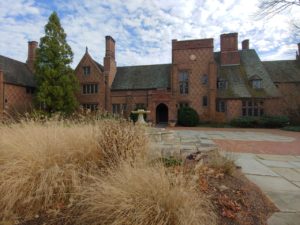
By then Aldie had become a social gathering place. The rich and famous darted in and out. Comedian Groucho Marx, conductor Leopold Stokowski and dance ingenue Isadora Duncan were among them. Aldie’s elegance made it a must-stop. Persian rugs, overstuffed furniture, gold-tile mosaics, a library, a great hall and an orangery made for luxurious living inside the 7-bedroom home. At Martha Mercer’s Christmas party more than 200 turned out to see Maria with her stepchildren perform in the grand hall. The program of Christian carols included “O Come, All Ye Faithful”, “Away in a Manger” and “Silent Night”.
Oscar Hammerstein II, having purchased a 40-acre cattle farm near Aldie a year earlier, made it his habit to be in Doylestown weekdays to work on plays. He returned to New York only on weekends. So it’s possible he was in the borough on that Dec. 22, a Monday, when the Trapps performed. Did he sneak a peek, get his idea for “The Sound of Music” at Aldie?
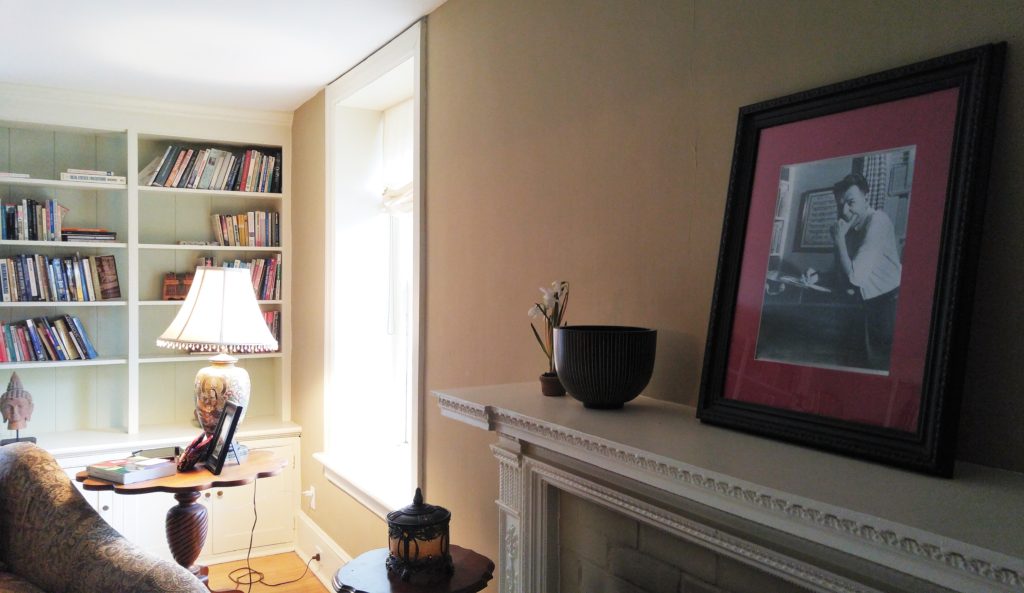
I contacted Ed Hall, husband of touring Elisabeth von Trapp, Maria’s folk-singing granddaughter. From the Trapp homestead in Vermont, Ed told me Hammerstein got his inspiration from Broadway actress Mary Martin in the mid-1950s. “She was contacted by her agent with ‘Do I have a story for you!’ The agent had come into possession of Maria von Trapp’s 1949 autobiography and West German movie ‘The Trapp Family’. Mary Martin took the idea to Oscar Hammerstein and Richard Rodgers, his collaborator.”
Hall added it’s unlikely Hammerstein attended the Aldie performance despite living close by. “First of all he was Jewish and the von Trapps were Catholic and the program largely was Catholic.” Still the irony of the Broadway legend and the Trapps being in the same place – tiny Doylestown – at the same time in 1941 is irresistible. Who can say for sure Oscar didn’t wander over? As Wynne noted, “Oscar was show biz. I don’t think religion would have kept him away.”
Sources include “This Was Doylestown, 1941″ by Edward Levenson published in Patch on Dec. 20, 2012.

